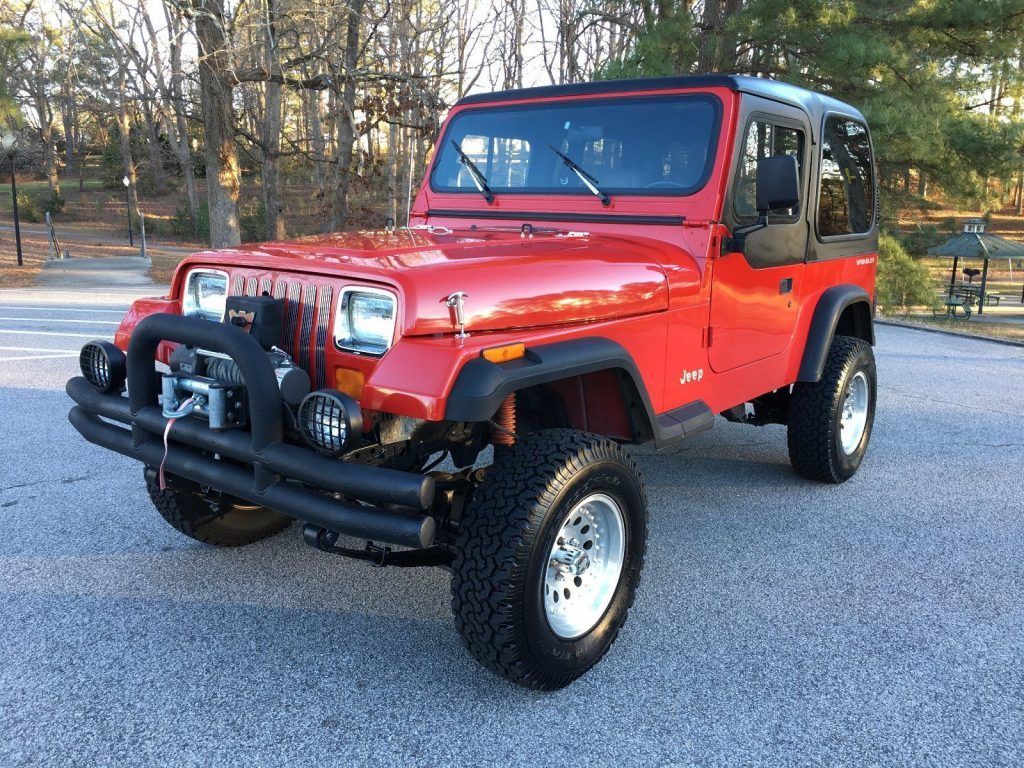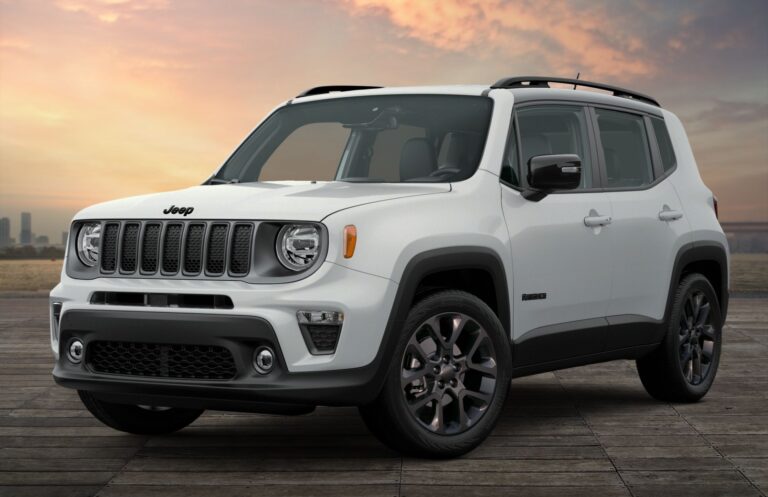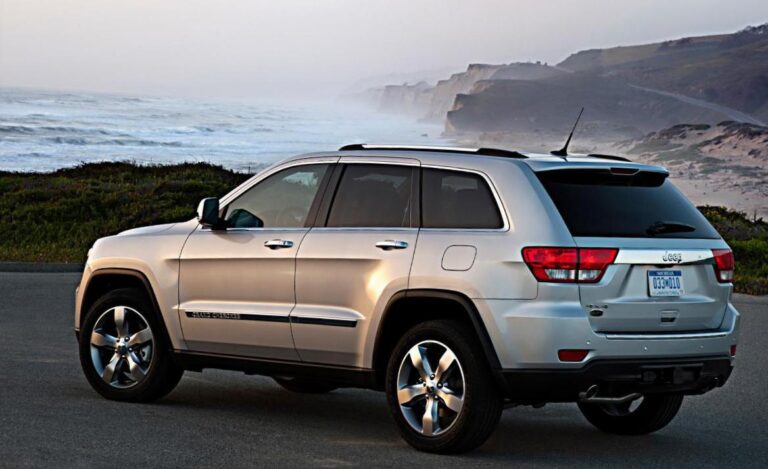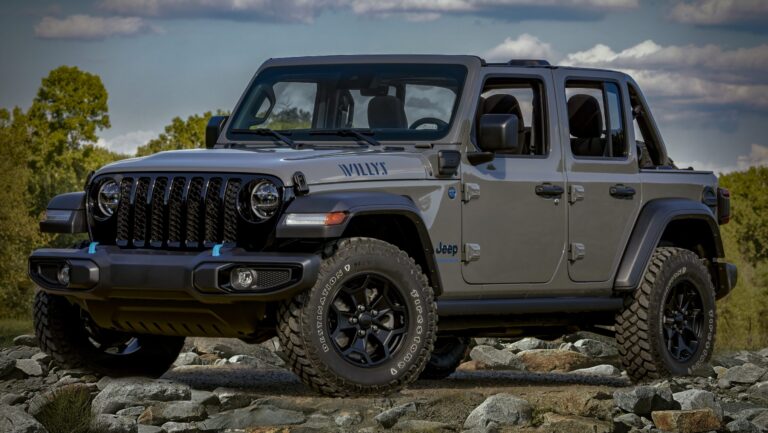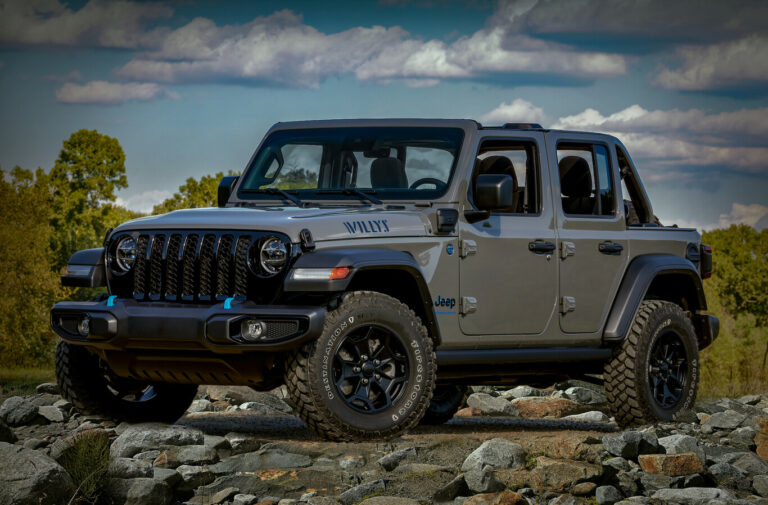1993 Jeep YJ For Sale: Your Comprehensive Buyer’s Guide
1993 Jeep YJ For Sale: Your Comprehensive Buyer’s Guide jeeps.truckstrend.com
The open road, the wind in your hair, the unmistakable silhouette of an iconic American legend – for many, the allure of a Jeep is undeniable. Among the pantheon of these rugged vehicles, the 1993 Jeep YJ Wrangler holds a special place. Bridging the gap between the utilitarian CJ series and the more refined TJ, the YJ, with its distinctive square headlights, offers a unique blend of classic Jeep character and modern drivability. For enthusiasts and newcomers alike, finding a 1993 Jeep YJ for sale isn’t just about acquiring a vehicle; it’s about investing in a piece of automotive history, a capable off-road machine, and a symbol of freedom and adventure. This comprehensive guide will navigate you through everything you need to know when considering a 1993 Jeep YJ for your next acquisition.
Why the 1993 Jeep YJ Remains a Coveted Classic
1993 Jeep YJ For Sale: Your Comprehensive Buyer’s Guide
The 1993 YJ model year stands out for several reasons, making it a particularly attractive option in the used Jeep market. It represents one of the final years of the leaf-spring suspension system (which ended in 1995 for the YJ), offering a robust and relatively simple setup favored by many off-road purists. Its square headlights, a controversial design choice at the time, have aged into a unique and recognizable feature, setting it apart from its round-headlight predecessors and successors.
Under the hood, the 1993 YJ offered two primary engine choices: the reliable 2.5-liter AMC 150 inline-four and the highly sought-after 4.0-liter AMC 242 inline-six. The 4.0L, in particular, is renowned for its torque, durability, and a legendary ability to rack up hundreds of thousands of miles with proper maintenance. This combination of classic aesthetics, a rugged drivetrain, and the relative simplicity of its mechanics makes the 1993 YJ a fantastic platform for both daily driving and extensive modification for off-road adventures. Its growing classic status also means that well-maintained examples can hold or even increase in value over time.
Key Considerations When Buying a 1993 Jeep YJ
Before you jump into the exciting world of YJ ownership, it’s crucial to understand the critical factors that will influence your purchase decision and subsequent ownership experience.
1. The Rust Monster: Your Primary Adversary
This cannot be stressed enough: Rust is the number one enemy of the YJ. Due to their age and often exposure to harsh elements, YJs are highly susceptible to corrosion.
- Frame: Inspect the frame rails thoroughly, especially near the suspension mounts, skid plates, and behind the front wheels. Look for flaking, holes, or significant pitting. Repairs can be costly and compromise structural integrity.
- Body: Check the floor pans (under the carpet!), rocker panels, wheel wells, and tailgate. Pay close attention to areas where dirt and moisture can accumulate.
- Underbody Components: Examine suspension components, exhaust system, and brake lines for excessive rust.

2. Engine Options: 2.5L (4-Cylinder) vs. 4.0L (6-Cylinder)
- 2.5L AMC 150 (4-Cylinder): This engine, with its Throttle Body Injection (TBI), is known for its simplicity and decent fuel economy. It’s perfectly adequate for light trail use and city driving, but it can feel underpowered, especially with larger tires or when loaded down.
- 4.0L AMC 242 (6-Cylinder): The undisputed champion. With Multi-Port Injection (MPI), this engine offers significantly more power and torque, making it ideal for highway cruising, heavier modifications, and serious off-roading. It’s the preferred choice for most enthusiasts and generally commands a higher price.
3. Transmission Types
- Manual Transmissions: The 1993 YJ typically came with the AX-5 (for 2.5L) or the AX-15 (for 4.0L). Both are generally reliable, but check for smooth shifting, grinding, or difficulty engaging gears.
- Automatic Transmissions: The 30RH (for 2.5L) and the 32RH (for 4.0L) are robust 3-speed automatics. Test for smooth engagement, delayed shifts, or slipping.

4. Transfer Case & Axles
- Transfer Case: Most YJs came with the NP231 (Command-Trac), which is a strong and popular part-time 4WD unit. Some earlier YJs had the NP207, which is less desirable. Ensure the 4WD engages smoothly in both 4-High and 4-Low.
- Axles: The standard setup is a Dana 30 in the front and a Dana 35 in the rear. While adequate for stock or mild off-roading, the Dana 35 is known to be weaker and can fail with larger tires and aggressive use. A rare and highly desirable upgrade is a factory Dana 44 rear axle, usually found in some Sahara or Renegade trims.
5. Maintenance History & Modifications
Always ask for service records. A well-documented maintenance history indicates a caring owner. Be wary of heavily modified Jeeps unless you understand the modifications. Poorly executed lifts, oversized tires, or engine swaps can lead to a host of problems. Conversely, professionally installed upgrades can add value.
Where to Find a 1993 Jeep YJ For Sale
The hunt for your perfect YJ can be an adventure in itself. Here are the best places to look:
- Online Marketplaces: Craigslist, Facebook Marketplace, eBay Motors are excellent starting points. Use specific search terms like "1993 Jeep YJ," "Jeep Wrangler YJ," or "Square Headlight Jeep."
- Dedicated Jeep Forums & Groups: Websites like JeepForum.com, WranglerForum.com, and various Facebook groups dedicated to YJ owners often have classified sections. These communities can also offer valuable insights and advice.
- Classic Car Dealerships: Some dealerships specializing in classic or enthusiast vehicles may have YJs, often at a higher price but potentially in better condition.
- Local Ads & Word-of-Mouth: Check local classifieds, auto trader magazines, and let friends know you’re looking. Sometimes the best deals are found offline.
- Auctions: Online and physical auto auctions can be a source, but often come with more risk as you typically can’t thoroughly inspect the vehicle.
What to Look For During an Inspection (Your Buyer’s Guide Checklist)
Once you’ve found a potential candidate, a thorough inspection is paramount.
- Exterior: Beyond rust, check for body panel alignment, paint condition (original vs. repaint), and any signs of accident damage. Inspect the condition of the soft top or hardtop for tears, cracks, or leaks.
- Interior: Look for rips in seats, worn carpets, functioning gauges, and working HVAC. Test all lights, wipers, and horn. Check for water stains on the floor, which can indicate leaks.
- Underbody: This is where the real truth lies. Get under the Jeep with a flashlight. Look for frame damage, severe rust, leaks from the engine, transmission, or differentials. Check the condition of shocks, springs, bushings, and steering components (tie rods, drag link, steering box).
- Engine Bay: Look for fluid leaks (oil, coolant, power steering), cracked hoses, frayed belts, and corroded battery terminals. Check the general cleanliness – a very dirty engine bay might indicate neglect, while an overly clean one might be hiding something.
- Test Drive:
- Engine: Listen for unusual noises (knocking, ticking), check for smooth idle, acceleration, and no excessive smoke from the exhaust.
- Transmission: Ensure smooth shifts (manual or automatic), no slipping, and proper clutch engagement for manuals.
- Brakes: Test for pulling, pulsating, or sponginess.
- Steering: Check for excessive play, wandering, or clunking noises.
- 4WD: Engage 4-High and 4-Low (on a loose surface, not pavement) to ensure the transfer case works correctly. Listen for grinding or binding.
- Suspension: Drive over bumps to check for excessive bouncing or strange noises.
- Paperwork: Verify the title is clean and matches the VIN on the vehicle. Ask for maintenance records.
Common Issues and Solutions
Even well-maintained YJs can have quirks. Being aware of common issues can help you budget for potential repairs.
- Rust: As mentioned, pervasive. Solutions range from minor patch panels to full frame off restorations.
- Steering Play: Common due to worn tie rod ends, ball joints, or a loose/worn steering box. Replacements are readily available.
- Electrical Gremlins: Often related to corroded grounds or faulty sensors (especially for the MPI 4.0L). Diagnosis requires patience, but parts are not expensive.
- Fluid Leaks: Power steering pump leaks, oil leaks from the rear main seal or valve cover gasket, and transmission/transfer case leaks are common. Most are manageable but require attention.
- Vacuum Leaks: Can cause rough idle or performance issues, especially with the 2.5L TBI system.
- Suspension Bushings: Worn out bushings can lead to clunks and poor handling. Relatively inexpensive to replace.
Valuation and Pricing: What to Expect
The price of a 1993 Jeep YJ for sale varies significantly based on condition, engine, transmission, mileage, modifications, and geographical location. A highly modified or neglected YJ might be very cheap, but could be a money pit. A well-preserved, low-mileage 4.0L with a manual transmission will command a premium.
Here’s a general price guide:
1993 Jeep YJ Price Guide
| Condition Category | Estimated Price Range (USD) | Key Characteristics & Notes |
|---|
Introduction: The Timeless Appeal of the 1993 Jeep YJ
In the realm of classic off-road vehicles, few command the enduring respect and passionate following of the Jeep Wrangler. Within its celebrated lineage, the 1993 Jeep YJ occupies a particularly intriguing and pivotal position. It’s the generation that ushered in the “Wrangler” name, replacing the beloved but aging CJ series, and yet it retained much of the rugged, no-frills charm that defined its predecessors. Distinctive for its rectangular headlights – a departure that initially divided purists but has since become its signature – the 1993 YJ offers a unique blend of heritage and a touch of modern refinement for its era. For many, finding a "1993 Jeep YJ for sale" isn’t merely a transaction; it’s an opportunity to own a piece of American automotive history, a versatile platform for adventure, and a vehicle known for its legendary durability and customization potential. Whether you’re a seasoned off-roader, a collector of iconic vehicles, or simply someone seeking a robust and characterful daily driver, understanding the nuances of the 1993 YJ is essential before embarking on your purchase journey. This article will serve as your comprehensive guide, dissecting what makes this particular model year special, what to look for, and how to navigate the market to secure your ideal YJ.
Why the 1993 Jeep YJ Remains a Coveted Classic
The enduring appeal of the 1993 Jeep YJ stems from a confluence of factors that make it a highly desirable vehicle in today’s classic and enthusiast markets. Unlike its predecessors, the YJ introduced a slightly wider stance and improved on-road handling characteristics, making it more comfortable for daily driving without sacrificing its formidable off-road prowess. The 1993 model year, specifically, is a standout for several reasons:
Firstly, it falls within the last years of the YJ’s production run (1987-1995), benefiting from a more refined and mature design cycle. Crucially, it retains the robust leaf-spring suspension system on all four corners, a hallmark of traditional Jeep design favored by many for its simplicity, durability, and ease of modification for extreme articulation. This contrasts with the coil-spring setup introduced in the subsequent TJ generation, giving the YJ a distinct mechanical character.
Secondly, the 1993 YJ offered the highly acclaimed 4.0-liter AMC 242 inline-six engine with Multi-Port Injection (MPI). This engine is nothing short of legendary for its bulletproof reliability, ample torque, and longevity, often racking up hundreds of thousands of miles with proper maintenance. For those seeking power and a strong foundation for future upgrades, the 4.0L YJ is the holy grail. Even the standard 2.5-liter AMC 150 inline-four, with its Throttle Body Injection (TBI), is a robust and simple engine, perfectly adequate for light trail use and city driving, offering better fuel economy.
Finally, the YJ’s distinctive square headlights, initially a point of contention for some traditionalists, have evolved into an iconic and instantly recognizable design cue. This unique styling sets it

